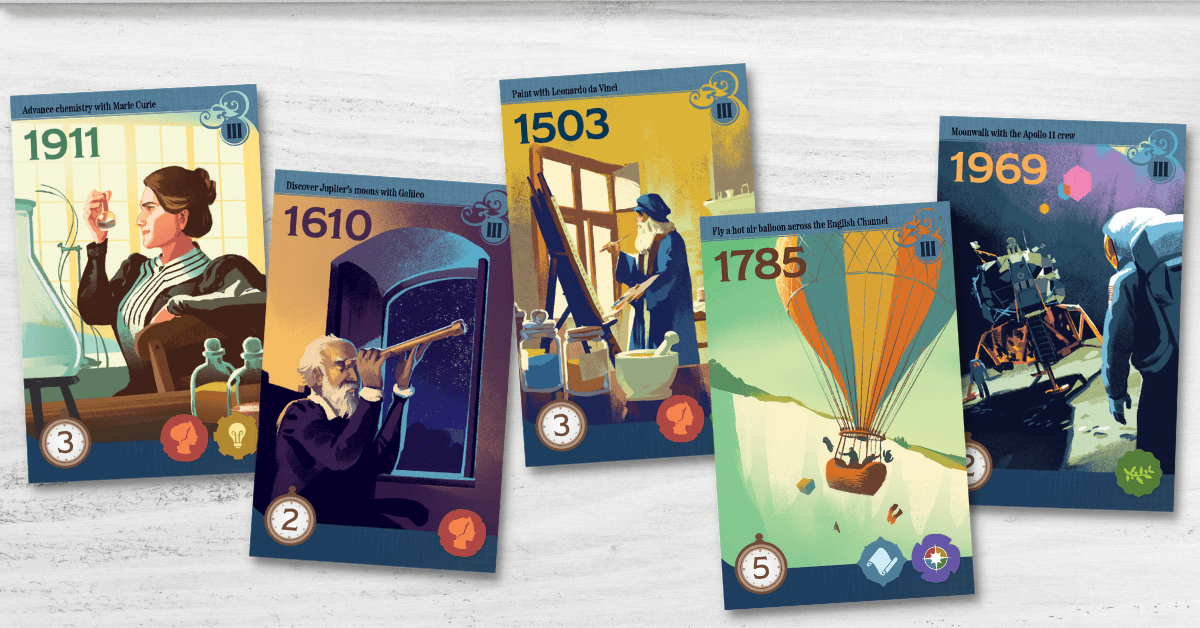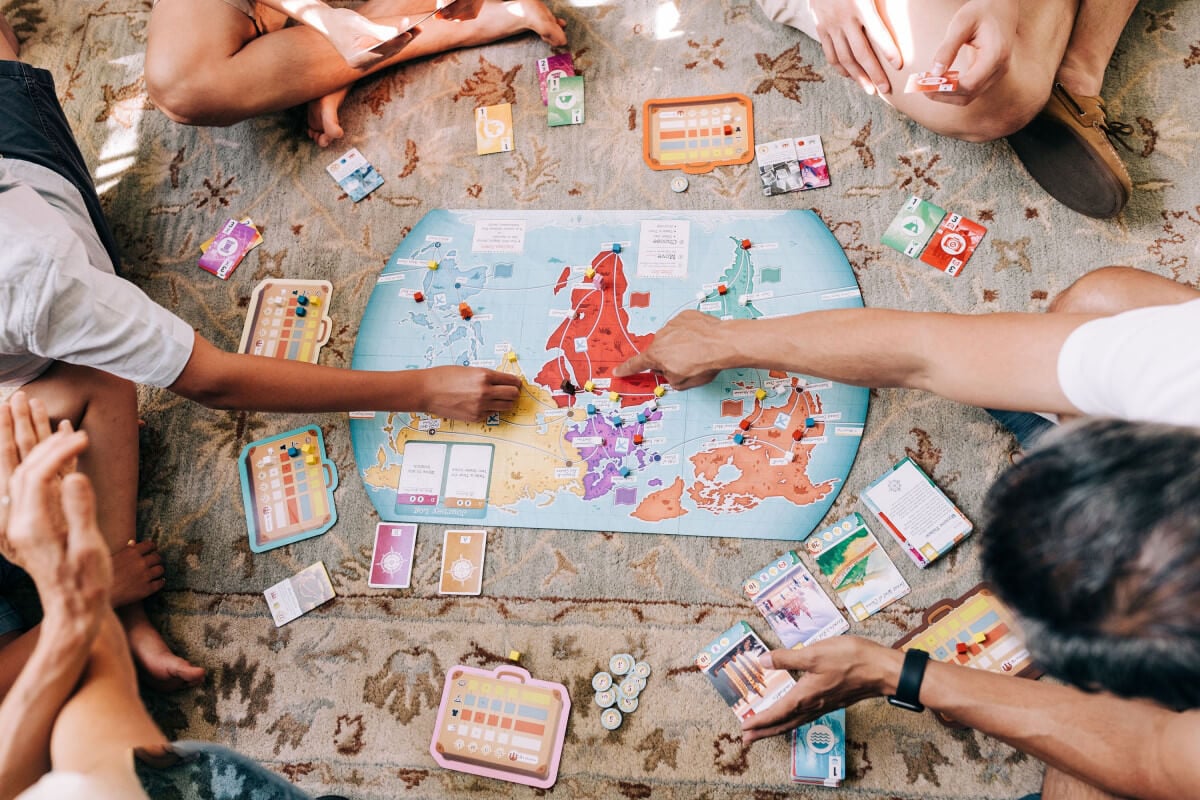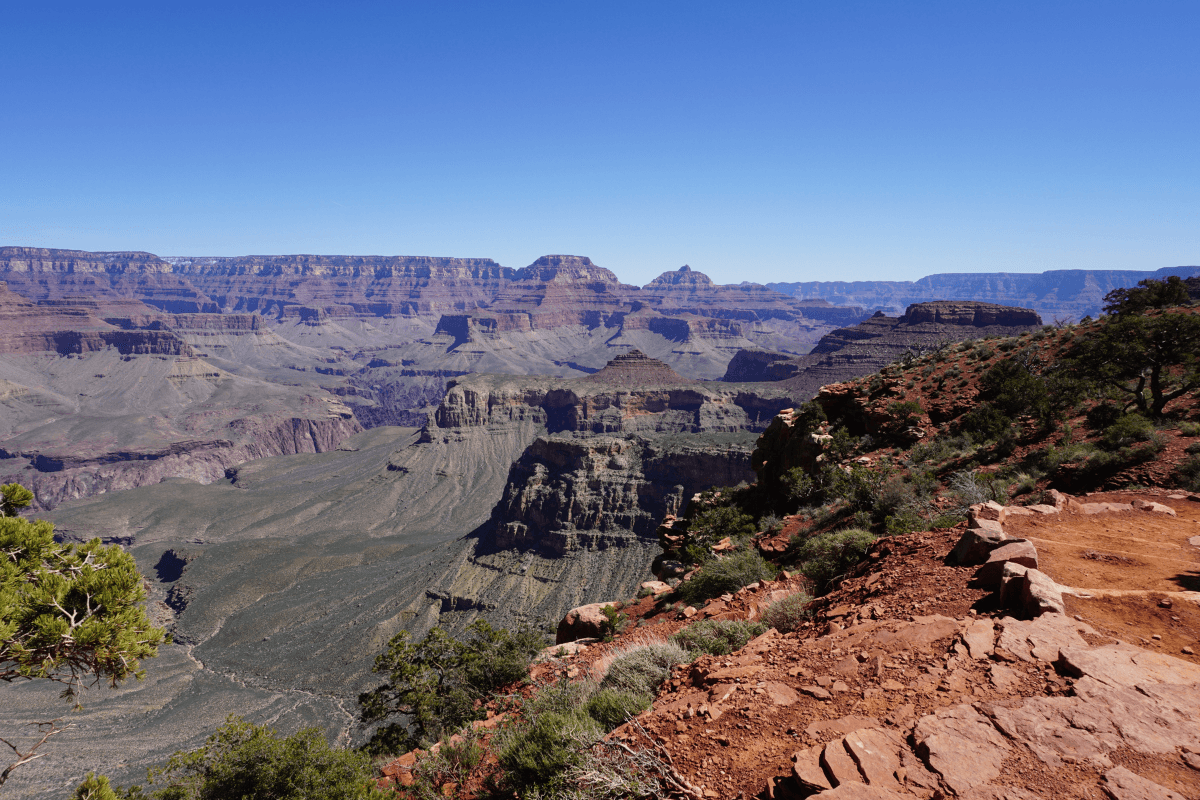Long before one of our board games makes it to your table, it goes through hundreds of renditions, rules, and play-testing sessions to bring it to fruition. I'm excited to talk about our newest game—Trekking Through History. While it shares a name with our Trekking line of games, the gameplay is very different.
Trekking Through History is your chance to go back in time to visit and participate in incredible moments in human history. It's a game that's really fun to play, but also teaches players about some great parts of history.
To help you get a better idea of what Trekking Through History is about, here are answers to some of the common questions we’ve been getting about the game.
How do you describe this game in just a sentence or two?
Humanity has discovered how to travel through time and visit the past. In Trekking Through History, you and your friends will go on a 3-day tour of history for the chance to see everything you’ve ever wanted.
What part of history does the game cover?
We’re mostly focusing on recorded history, so the last 5,000 years. However, there are a few events that go further back like the date -37,000 where we invite players to see the famous handprint left in the Maros-Pangkep caves. It’s the oldest known cave painting in the world, and to me, this event has a poetic quality about it. If you think about it, a handprint is a deeply personal thing because it says someone was there in the most simple and beautiful way. This is a great example of the unique moments in history we tried to capture with this game.
How did we choose our historical events?
We knew it was going to be challenging (how do you choose the best moments in history?!)so we wrote and debated guidelines before we even got started. Early on, we all agreed that we weren’t trying to make a historical game, covering significant events you might find in a history book. But instead, we wanted to create an experience. One of the things we say at Underdog Games is that we want our games to encourage curiosity, discovery, and learning. So we actively sought out unique and unfamiliar moments.
What was our criteria for choosing dates to feature?
This game is an opportunity for families to take a tour through history. The most important thing to us was to choose events and moments that you’d actually want to experience. So things like war were out but events like the first Olympics made the cut. Everything that made the final cut had to meet this ideal. We also had some other criteria like it couldn’t be stodgy, we wanted to avoid cliches and biases, and we needed to choose events distributed across time. I actually have an entire document and rubric about our methodology (I’m a scientist at heart).
How do you make sure the dates are accurate and factual?
The fact-checking process is intense. First, we started with a great historian who helped us do a deep dive into cool events—she was great for helping us dig up unique moments and fun facts. Then the cards went through about a dozen others who weighed in, gave feedback, and challenged us on the chosen events. Even our CEO, Hasan, wanted his turn at the list just a few weeks before it was finalized. We started with more than 1,000 events and got it down to 108—not an easy task!
Is this a family game?
We designed it with families in mind, specifically with kids who are 10+. To ensure it would be good for all ages, we did a lot of playtesting and tweaking of mechanics and rules. Few things make me happier than being able to remove or simplify rules. Don’t get me wrong—this game still has a number of rules in it—but we did our best to make it direct as possible. To me, games with simple rules are like the poetry of the game world.
Is this game just like the others in the Trekking line?
Mechanically, it’s very different. For lots of game lines, when a sequel comes out, that sequel often regurgitates the mechanics of the other games. We expressly did not want to do that for a couple of reasons. First, we want to make sure that the game honors its theme in a natural way. Second, I believe when people buy a new game, novelty and surprise is part of the pleasure. It’s fun to see different elements. The thing that unifies the games in the Trekking game is exploration, curiosity, and discovery—not specific mechanics.
What makes this interesting?
As a fan of the game, one thing that stands out to me is that there are big moments in this game where you can set yourself up just right to have a really big turn. Everyone has these opportunities, so the game doesn’t get lopsided and it’s really fun to execute. I also like that this game has a lot of different angles and strategies for players to try without getting complicated. Plus, there are time crystals involved. Everyone loves the time crystals.
What are the other details about the game like length, age range, etc.?
It’s designed for 2-4 players, ages 10 and up. Once you get going, it’ll take about 45 minutes to play.
When will it be available?
It's available now!
Get a FREE downloadable calendar featuring the unique art from the game. Just click here.





